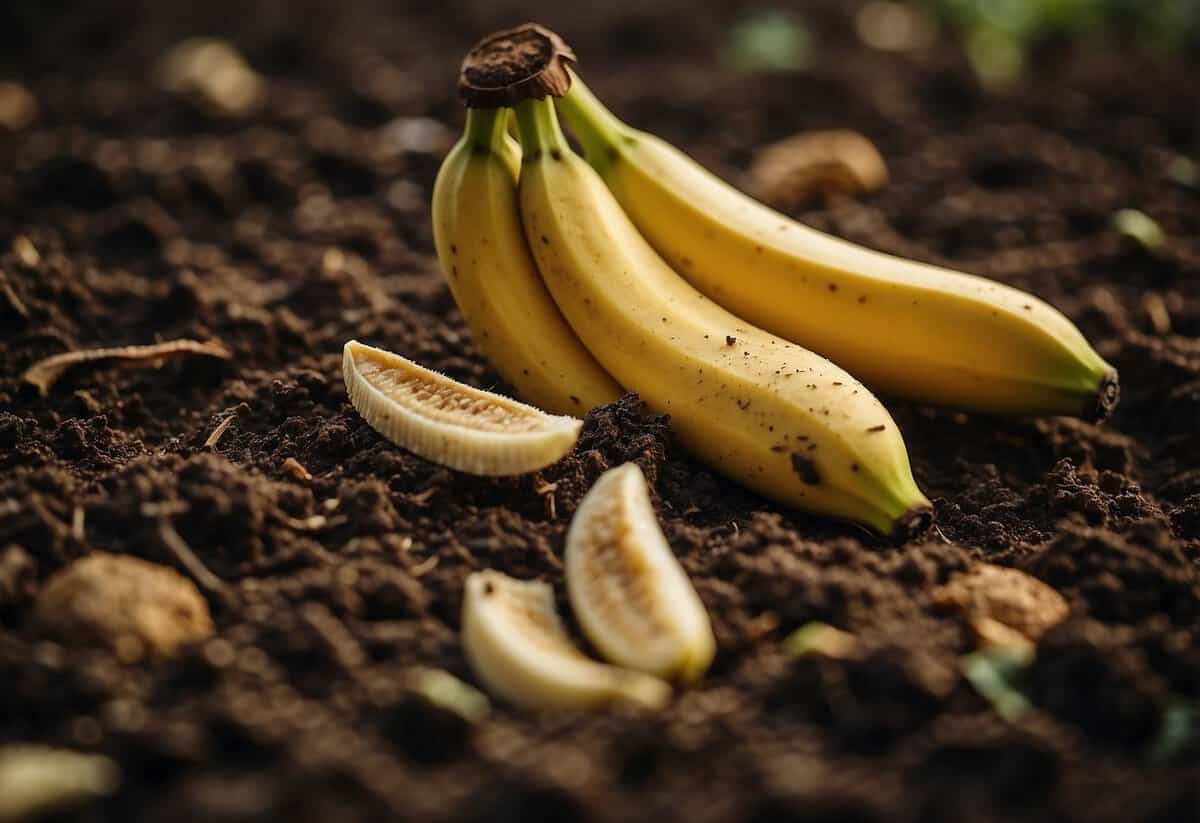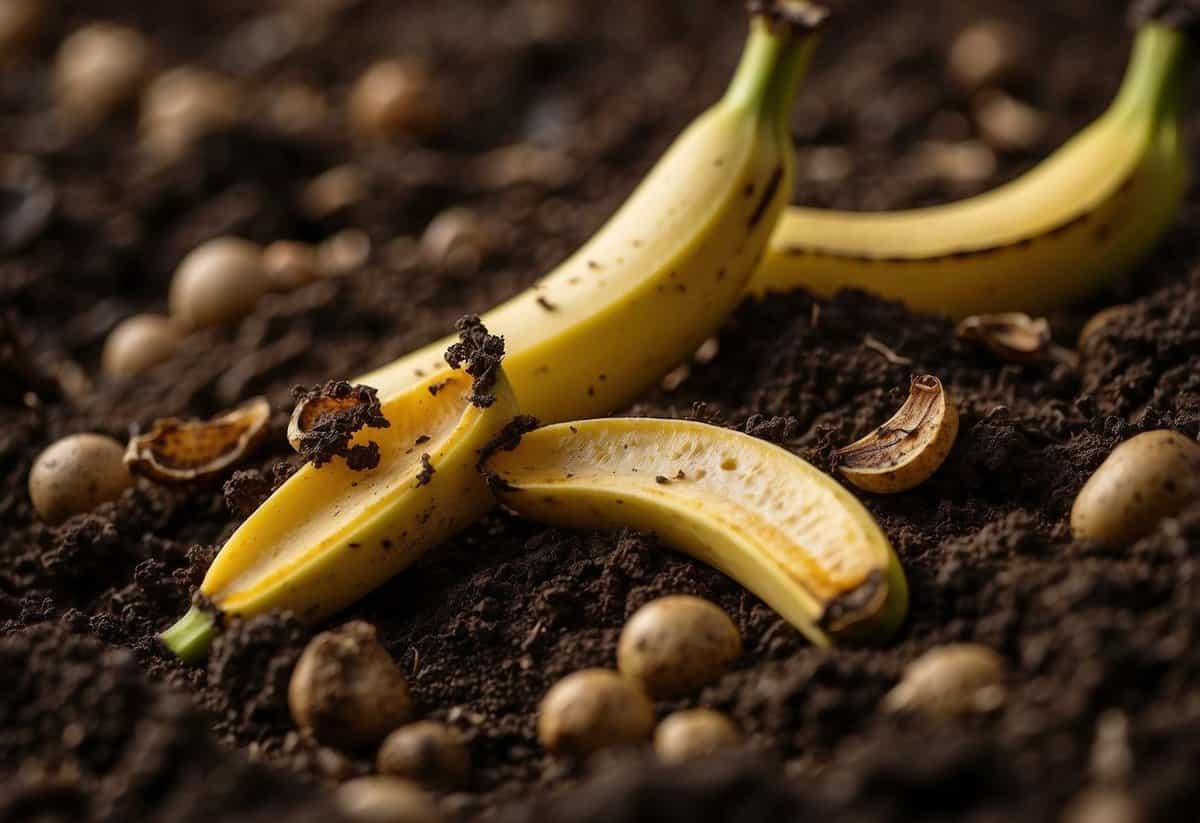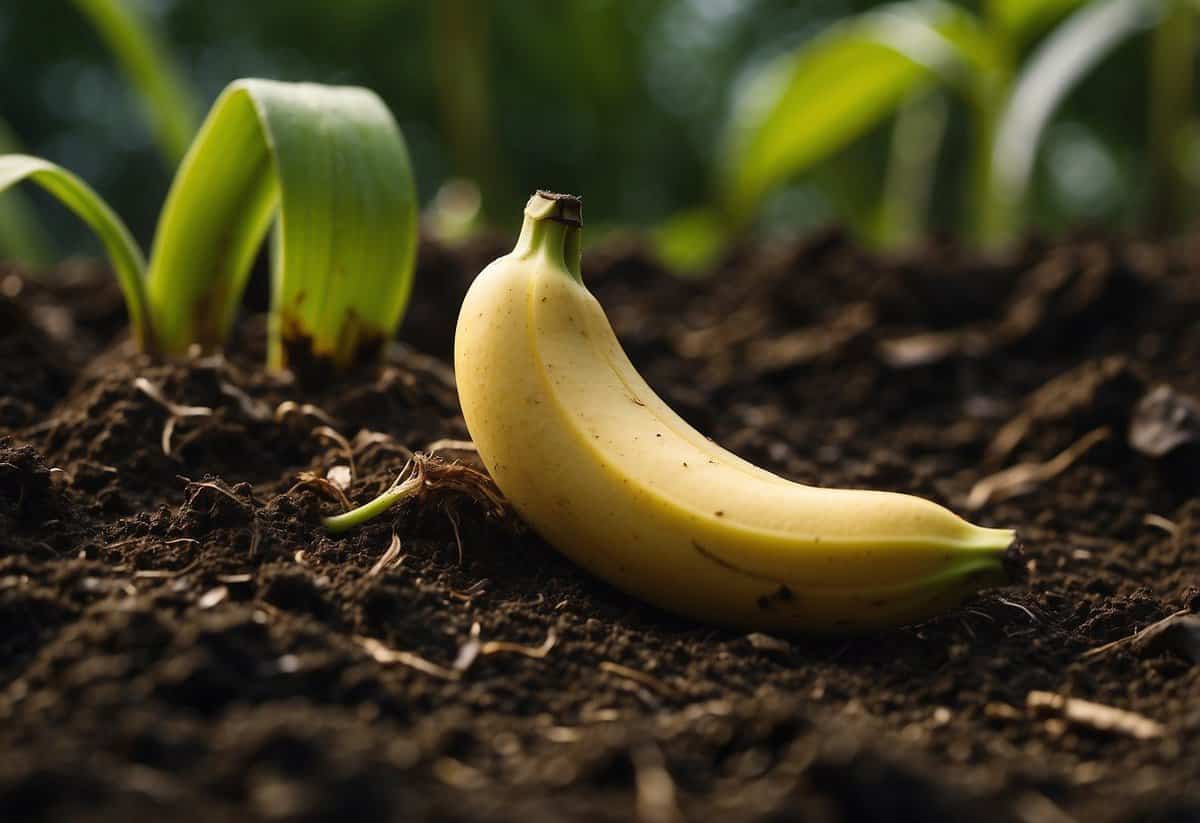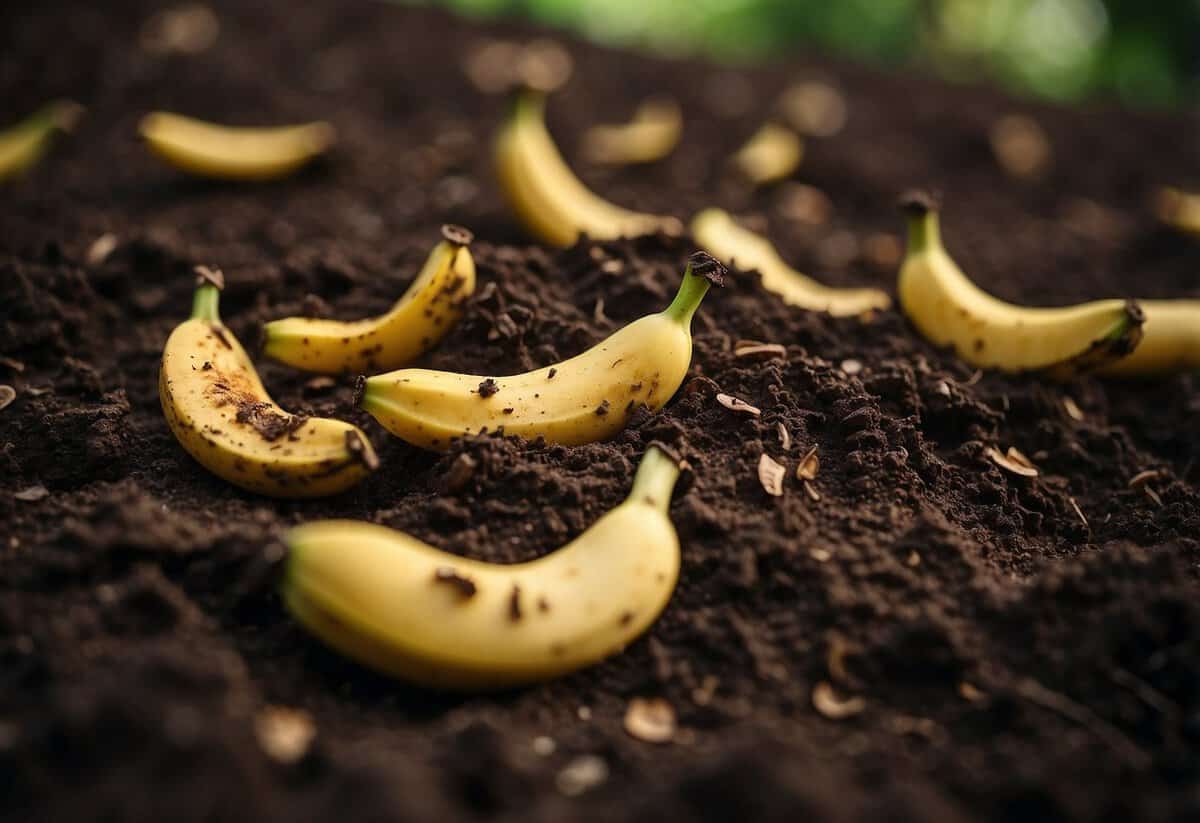How Long Does It Take for Banana Peels to Decompose in Soil? A Quick Guide
Wondering what happens to banana peels after you toss them in the compost or soil? You might be surprised to learn how their decomposition varies based on different conditions. Banana peels can take around 6 to 9 months to decompose in a well-maintained compost, but up to two years in regular soil. This process depends on factors like moisture, temperature, and sunlight.

When you compost banana peels, they not only break down faster but also enrich the soil with essential nutrients, making your garden thrive. Contrast that with simply throwing them on the ground, where they can linger for months or even years. So next time you enjoy a banana, consider contributing to your compost pile.
Ready to dive deeper into the fascinating science behind banana peel decomposition? Keep reading to explore why these peels take varying amounts of time to decompose and how you can speed up the process for your garden.
Understanding Decomposition

To understand how long banana peels take to decompose in soil, it’s essential to learn a bit about the decomposition process and what factors influence how quickly organic materials break down.
The Science of Decomposing Organic Materials
Decomposition is the natural process where organic matter, like banana peels, breaks down into simpler components. This is mainly driven by microorganisms, such as bacteria and fungi. These tiny organisms help to eat away at the banana peel, turning it into nutrients that enrich the soil.
In warmer and more humid conditions, microorganisms become more active, speeding up the decomposition process. During decomposition, the peel breaks down into carbon dioxide, water, and nutrient-rich soil components. This helps improve soil quality and provides nourishment for plants.
Factors Affecting Banana Peel Breakdown
Several factors can affect how quickly a banana peel decomposes in soil. Temperature plays a crucial role; higher temperatures typically lead to faster decomposition.
Moisture levels are also important. Moist soil helps microorganisms thrive, speeding up the breakdown process. On the other hand, dry conditions can slow it down significantly.
Soil composition matters too. Soil rich in organic matter supports more microorganisms, facilitating faster decomposition. Well-aerated soil allows more oxygen to reach the microorganisms, which also helps speed up the process.
Lastly, how the peel is disposed of can influence the rate at which it decomposes. Cutting up the peel into smaller pieces before burying it allows for quicker decomposition because it increases the surface area available to the microorganisms.
Preparation for Composting

To compost banana peels effectively, start by selecting the right compost bin and ensuring a proper balance of ingredients. This preparation helps in speeding up the decomposition process and improving the quality of the compost.
Choosing a Compost Bin
Choosing the right compost bin is crucial. There are many options, such as tumbler bins, stationary bins, and worm bins. Tumbler bins allow you to turn the compost easily, helping it aerate and decompose faster. Stationary bins are simple and affordable, though turning the pile might require some effort.
Worm bins are wonderful for indoors or small spaces. They use worms to break down food scraps quickly. Ensure the bin has good ventilation and is made of durable materials like plastic or wood. A lid is helpful to keep pests out and reduce odors. Consider the size of your bin, which depends on how much kitchen waste you generate. A small bin might be sufficient for a single family, while larger setups are better for those with significant organic waste.
Balancing Compost Ingredients
Balancing compost ingredients is key for efficient decomposition. Your compost needs a mix of “greens” and “browns.” Greens are high in nitrogen and include kitchen scraps like banana peels, coffee grounds, and fresh grass clippings. Browns are rich in carbon and include items like dead leaves, cardboard, and straw.
Create a balance by using one part greens to two parts browns. This ratio helps maintain the right moisture and airflow within the compost. Chop or shred large pieces to speed up the composting process. Also, turn the pile regularly to provide oxygen and mix the materials. Keeping your compost moist but not too wet is vital. It should feel like a damp sponge.
Balancing these elements ensures your banana peels and other organic waste decompose efficiently, creating rich, nutritious compost for your garden.
Composting Process

Composting banana peels involves layering them correctly, maintaining proper aeration and moisture, and understanding their transformation into fertilizer. This will ensure an effective decomposition process in your compost pile.
Layering and Maintenance
When you add banana peels to your compost pile, it’s important to layer them with other materials. Start with a base layer of coarse materials like twigs or straw for good drainage. Then, alternate between green materials like banana peels, which are rich in nitrogen, and brown materials like dried leaves or cardboard, which provide carbon. This balance helps the microbes break down the compost efficiently.
Tip: Cut banana peels into smaller pieces to speed up decomposition. They decompose faster when more surface area is exposed to microbes, moisture, and air.
Aeration and Moisture Control
Proper aeration and moisture levels are critical for your compost. Turn the pile regularly to introduce oxygen, which helps microbes break down the organic matter. Over time, this process will produce carbon dioxide as a byproduct, which indicates active decomposition.
Moisture Tip: Your compost should be as damp as a wrung-out sponge. Too much moisture can create anaerobic conditions causing a bad smell. Not enough moisture, and the decomposition process will slow down.
Aerating the compost helps prevent unwanted odors and maintains balance. Use a pitchfork or compost turner every few weeks to keep air flowing through your pile.
From Peels to Fertilizer Transformation
As the banana peels decompose, they transform into a rich, dark compost that is full of nutrients. This process typically takes a few months, depending on the conditions of your compost pile.
Banana peels add essential elements like calcium, magnesium, sulfur, and potassium to your compost. These nutrients are crucial for plant growth and soil health. By regularly adding and managing your compost, you help ensure your garden benefits from these decomposed peels.
Your patience and effort will result in a natural, nutrient-rich fertilizer that can make your plants thrive. Keep your compost pile well-maintained to enjoy the full benefits of this eco-friendly gardening practice.
Environmental Benefits

Using banana peels in your garden can have significant environmental benefits. Not only do they help reduce waste going to landfills, but they also improve soil quality by adding essential nutrients and organic material.
Reducing Waste and Landfill Impact
Adding banana peels to your garden decreases the amount of waste that ends up in landfills. Landfills are an ongoing problem because they contribute to greenhouse gas emissions and environmental degradation.
By using banana peels as a natural fertilizer, you help minimize this impact. Instead of throwing them away, you can give banana peels a second life in your garden.
This eco-friendly practice not only reduces waste but also lessens the demand for chemical fertilizers, which can harm the environment.
Contributing to Soil Health
Banana peels enrich the soil with vital nutrients like potassium, calcium, and magnesium. These nutrients are beneficial for plant growth and soil quality.
When you bury banana peels in the soil or compost them, they break down into organic material. This material improves the soil structure, making it easier for roots to grow and absorb water.
Healthy soil means healthier plants and a more robust garden. By using banana peels, you enhance the soil’s natural ecosystem, leading to better environmental conditions overall.
Troubleshooting and Optimization

Composting banana peels can be tricky due to various environmental and procedural factors. Here, we’ll address common challenges and provide tips to enhance the efficiency of decomposition.
Common Composting Challenges
Pests and Fruit Flies: Pests like rodents and fruit flies can be attracted to banana peels. Covering the compost pile with a tarp or a thick layer of leaves can help. Ensure you regularly turn the pile to discourage pests.
Temperature and Humidity: The decomposition process is influenced by temperature and humidity. Optimal composting requires maintaining a pile temperature between 135°F and 160°F. If it gets too dry, add water to maintain moistness, but avoid over-watering as this can lead to a smelly, anaerobic environment.
Composting Method: Different methods can present unique challenges. For example, cold composting is slower and more prone to pests. Hot composting, while faster, requires more attention to detail, like frequent turning and precise balancing of green (nitrogen-rich) and brown (carbon-rich) materials.
Enhancing Decomposition Efficiency
Cutting the Peels: Chop the banana peels into smaller pieces. This increases the surface area, allowing microorganisms to break down the material faster. Smaller pieces also help speed up decomposition in both hot and cold composting systems.
Balancing Green and Brown Materials: A good mix of green (nitrogen) and brown (carbon) materials is vital. Adding too many banana peels without balancing them with dry leaves or cardboard can slow down the process. Aim for a brown to green ratio of about 3:1.
Aeration: Regularly turning your compost pile introduces oxygen, which is crucial for aerobic decomposition. Aim to turn the pile every few days if you’re hot composting, and at least once a week if you’re using the cold method.
By addressing these challenges and optimizing your composting process, you can effectively manage banana peels and enhance their decomposition.







